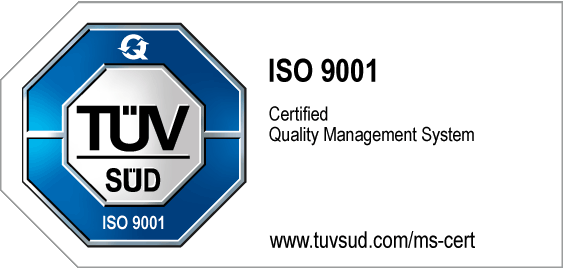Innovation – At a Glace
| Definition & Meaning | In the corporate context, innovation involves introducing new ideas, products, services, or processes that generate measurable value and are essential for long-term competitiveness. |
| Types of Innovation | Companies benefit from product, process, business model, market, technological, and social innovations, as well as open innovation; each differs in focus and impact. |
| Incremental vs. Radica | Incremental innovation improves existing offerings step by step, while radical innovation triggers groundbreaking changes with the potential for market transformation. |
| Fostering an Innovation Culture | Clear goals, open communication channels, reward systems, training, and rapid dissemination of new knowledge are key success factors. |
| Methods & Success Measurement | Approaches such as Design Thinking, Lean Startup, or Scrum accelerate the innovation process; success is measured through KPIs such as time-to-market, revenue growth, efficiency improvements, and customer satisfaction. |
Innovation – Definition
Innovation is the process of turning idea generation into tangible products, services, or processes that create value and improve performance. It is a key driver for staying competitive in dynamic markets and addressing evolving customer needs.
Incorporating innovation into a business strategy enables companies to adapt quickly to change and seize emerging opportunities.
By doing so, organizations can foster sustainable business growth and strengthen their market position over time.
Ideas and Innovation
Innovative ideas are the foundation for creating products, services, and processes that bring fresh value to the market. Service innovation focuses on enhancing or reinventing the way services are delivered, improving customer experience and efficiency.
Through innovative thinking, organizations can identify unique solutions to challenges and differentiate themselves from competitors.
What Types of Innovation Exist?
There are various types of innovation that differ in nature and impact on products, services, or processes. In the business world, the most relevant include:
- Product Innovation: Introducing new or improved products to the market through new features, designs, or technological advances.
- Process Innovation: Improving business processes by increasing efficiency, reducing costs, or enhancing quality.
- Business Model Innovation: Redesigning how a company creates, captures, and delivers value to unlock new revenue streams or competitive advantages.
- Market Innovation: Introducing existing products or services to new markets or identifying new applications.
- Social Innovation: Developing new approaches to solving societal challenges and creating positive social change.
- Technological Innovation: Introducing new technologies, whether in the form of hardware, software, or advanced manufacturing processes.
- Open Innovation: Involving external sources such as customers, suppliers, or research institutions to leverage ideas, resources, and expertise.
- Innovation Management: Implementing new methods, structures, or cultures to create an organizational environment that fosters creativity and innovation capability.
Incremental and Radical Innovation
Incremental Innovation focuses on optimizing existing elements to improve efficiency, reduce costs, or enhance usability without making fundamental changes or introducing groundbreaking innovations.
Radical Innovation aims for significant breakthroughs that can have far-reaching impacts on markets, industries, or society as a whole.
Both play important roles in a company’s innovation process: incremental innovation supports ongoing optimization, while radical innovation paves the way for transformative change.
The Importance of Innovation for Companies and Business Models
Innovative companies are better equipped to adapt to changing markets and seize new opportunities.
Successful innovation often results from a combination of creative thinking, strong leadership, and a well-structured innovation team.
Process innovation helps improve efficiency, reduce costs, and deliver higher quality products or services.
By embracing technological advancements, companies can stay ahead of competitors and meet evolving customer demands.
A culture of risk taking encourages experimentation and allows organizations to discover breakthroughs that drive long-term success.
Methods and Approaches in Innovation Management
There are various methods and approaches in innovation management that companies use to promote and successfully implement the innovation process. Here is an overview of some important methods:
- Design Thinking: A creative, user-centered approach involving iterative processes of ideation, prototyping, and testing to develop innovative solutions.
- Lean Startup: Inspired by lean manufacturing, this approach focuses on rapid prototyping and iterative testing of business models to drive innovation more efficiently and with less risk.
- Scrum: An agile framework for product development that uses short development cycles (sprints) with regular reviews and adjustments.
- Open Innovation: Integrating external ideas, resources, and expertise through partnerships, collaborations, or public involvement.
- TRIZ (Theory of Inventive Problem Solving): A systematic method for solving technical problems and fostering innovation by drawing on patterns from successful inventions.
- Blue Ocean Strategy: Creating new markets and differentiating from competitors by identifying untapped niches and innovative offerings.
- Corporate Incubators/Accelerators: Setting up internal startups or collaborating with external startups to accelerate innovation.
- Innovation Audits: Systematic assessments of a company’s innovation capabilities to identify weaknesses and implement improvements.
- Technology Roadmapping: Developing a structured plan to identify, prioritize, and implement technologies over time to support innovation strategy.
- Six Sigma: A data-driven, quality-oriented approach to minimizing defects and variations, contributing to continuous improvement and innovation.
Establishing an Innovation Culture
Establishing an innovation culture first requires a clear commitment from the company’s leadership to foster creativity and innovative thinking. A clear overview of goals, processes, and responsibilities helps provide all stakeholders with a clear sense of direction.
Equally important is the creation of transparent communication channels that allow employees to openly exchange ideas and quickly disseminate new knowledge throughout the organization.
In addition, implementing reward mechanisms for innovative contributions, as well as providing training and resources to strengthen employees’ innovation capabilities, are key steps to support innovation initiatives and implement innovation in a sustainable way within the company.
Measuring the Success of Innovation in Companies
Measuring the success of innovation requires defining clear performance indicators (KPIs) that cover both quantitative and qualitative aspects – such as the launch of new products, revenue growth, efficiency gains, or customer satisfaction.
Regular monitoring and adjustment of these KPIs is essential to ensure that innovation efforts remain aligned with the company’s strategic objectives.
Future Trends and the Role of Technology in Innovation
Future trends suggest that technology will play an increasingly prominent role in driving innovation—particularly through advances in areas such as artificial intelligence, data analytics, blockchain, and advanced manufacturing technologies.
Integrating these technologies enables companies to operate more efficiently, agilely, and with greater customer focus, paving the way for new business models and innovative solutions, including architectural innovation that transforms the structure of products, services, and processes.
The growing interconnectedness and digitalization also offer opportunities for cross-industry collaboration and the development of new ecosystems that will further accelerate the innovation process.
Frequently asked questions and answers
Innovation is the process of transforming innovative ideas into groundbreaking products, services, or processes that deliver real value to customers and stakeholders. It involves not only creating something new but also improving existing solutions to enhance quality, increase efficiency, and solve problems in smarter ways.
Organizations that embrace innovation foster a culture where creativity is encouraged, experimentation is supported, and learning from failure is seen as part of progress. A structured innovation program can help guide these efforts, ensuring that ideas are systematically evaluated, developed, and implemented for maximum impact.
Ultimately, innovation is a key driver of long-term success, enabling businesses to adapt to change, outperform competitors, and seize new opportunities in evolving markets. It bridges the gap between vision and execution, turning potential into measurable results.
The four main types of innovation are product innovation, process innovation, marketing innovation, and organizational innovation.
Product innovation involves creating new or significantly improved goods or services that meet emerging customer needs or open entirely new markets.
Process innovation focuses on improving production techniques, delivery methods, or operational workflows to boost efficiency, reduce costs, and enhance quality.
Marketing innovation changes how a company promotes, prices, and positions its offerings, enabling it to stand out in competitive markets.
Organizational innovation transforms how a business is structured and managed, optimizing internal processes and collaboration for better performance.
When applied strategically, these four types work together to drive continuous innovation, enabling companies to adapt to shifting market conditions while supporting sustainable development goals. By balancing creativity with long-term impact, organizations can remain competitive, relevant, and resilient in a rapidly changing world.
An example of innovation is developing a mobile app that personalizes shopping experiences based on customer needs. Such a solution often emerges from creative ideas that challenge traditional ways of doing business. By integrating diverse perspectives from different teams, companies can design products or services that appeal to a broader audience and stand out in the market.
Disruptive Innovation refers to the introduction of products, services, or business models that start by targeting underserved or niche markets and eventually reshape entire industries. These innovations often begin as simpler, more affordable solutions but improve over time to challenge and displace established competitors. By changing market dynamics, disruptive innovation can create new opportunities while rendering existing approaches obsolete.
Sources:
- Pavitt, Keith, ‘ Innovation Processes’, in Jan Fagerberg, and David C. Mowery (eds), The Oxford Handbook of Innovation (2006; online edn, Oxford Academic, 2 Sept. 2009), https://doi.org/10.1093/oxfordhb/9780199286805.003.0004, accessed 16 Sept. 2025.
- Kenneth B. Kahn, Understanding innovation, Business Horizons, Volume 61, Issue 3, 2018, Pages 453-460, ISSN 0007-6813, https://doi.org/10.1016/j.bushor.2018.01.011.
- Chris Freeman, 1995. “Innovation and Growth,” Chapters, in: Mark Dodgson & Roy Rothwell (ed.), The Handbook of Industrial Innovation, chapter 7, Edward Elgar Publishing.


